The bustle in a house
The morning after death
Is solemnest of industries
Enacted upon earth, –
The sweeping up the heart,
And putting love away
We shall not want to use again
Until eternity.
Reposted from Weedon’s Blog, March 26, 2013.

The bustle in a house
The morning after death
Is solemnest of industries
Enacted upon earth, –
The sweeping up the heart,
And putting love away
We shall not want to use again
Until eternity.
Reposted from Weedon’s Blog, March 26, 2013.
Grandma and Grandpa Grohn lived in Minnesota, and we in Oregon. After we had visited them, or they us, Grandma would cry at our parting. She couldn’t help it – she was old and thought she would not see us again here, though she expected to see us There.
That tension which runs from one eardrum to the other, just in back of the soft palate, that tension stealing the voice, is part of the reason I have never moved too far from home. My brother, herculean, must be stronger than I as he wends his way back toward the airport.
I’m told my leg was amputated.
It was gangrenous.
The incision is healing, but I want a leg,
and question whether I should
in a petition for patience.
The Weather Channel app on my Android device said that dry conditions would continue for my bicycle ride home. After a mile, however, I stopped to put on my rain-jacket.
I work in Oregon and live in Washington, twice a day crossing the mighty Columbia River that separates these states. The 8.8-mile ride includes a two-mile span over the Glenn Jackson bridge which carries four lanes of Interstate-205 in each direction over the river. Between the north- and south-bound lanes, is a 9-foot wide pedestrian and bicycle lane.
My greatest pleasure during the commute comes on clear days at the top of the bridge in Washington State, overlooking the Columbia River. In the morning, the sun rises behind the sharply-peaked Mt. Hood, reflecting over the expanse of water to the east.
This Monday past, however, an unlikely thing happened. A spring shower, forecast to begin later, started up as the sun was setting, and as my commute home began. As I approached the bottom of the bridge, the declining sun cut in under the clouds, and shining through the showers over the river, painted the bottoms of the clouds, the river, the shore, and even the rain itself in sepia tones.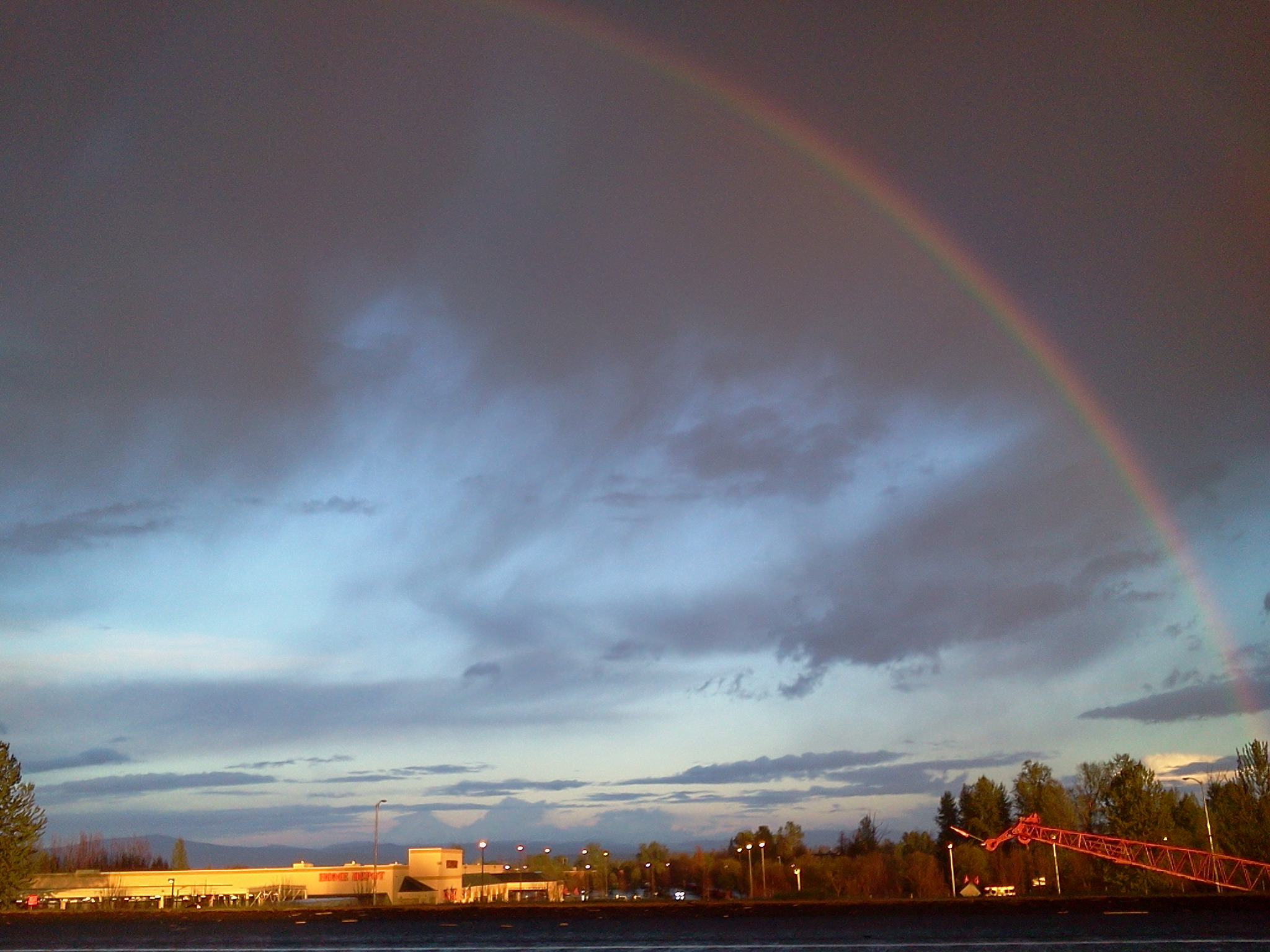
The rainbow to the east was so wide it seemed to land on either side of the river. Cars were stopping on the bridge to take photographs.
At the top of the bridge, the sun setting in the opposite direction of the rainbow made it worth being drenched.
If such reminders and gifts could be predicted, I would happily pack the real camera on such a day.
I think I do a decent job of taking photographs, but I’m no pro, as evidenced by the strategy of taking 100 shots to get one good one. In the critical moment, as when the opportunity for a shot is fleeting, it probably won’t work out. The focus will be off, I will be moving too much, or some other circumstance will keep the image from being useable. But when I can control the conditions and set up my shot, things generally work out . . . as long as I remember to set the white balance first.
My equipment is pretty average these days, and not very new. My camera body is a Canon EOS XT. It is an 8 megapixel camera, not even up to the entry level DSLR camera Canon builds today. I have three lenses in my bag. The first is the standard 28-80mm lens that came with the camera, and the second lens is a basic 75-300mm telephoto for those situations were I can’t get very close to the subject. But my third lens is the one I always use whenever possible.
My 50mm prime lens (EF 50mm f/1.4 USM), is my favorite. What I see through the viewfinder is pretty much what I see with my naked eye, no bigger and no smaller. Also, because the largest aperture is f/1.4, I can shoot in low light conditions without a flash, or take a photo that draws attention to the subject by leaving everything in front or behind out of focus.
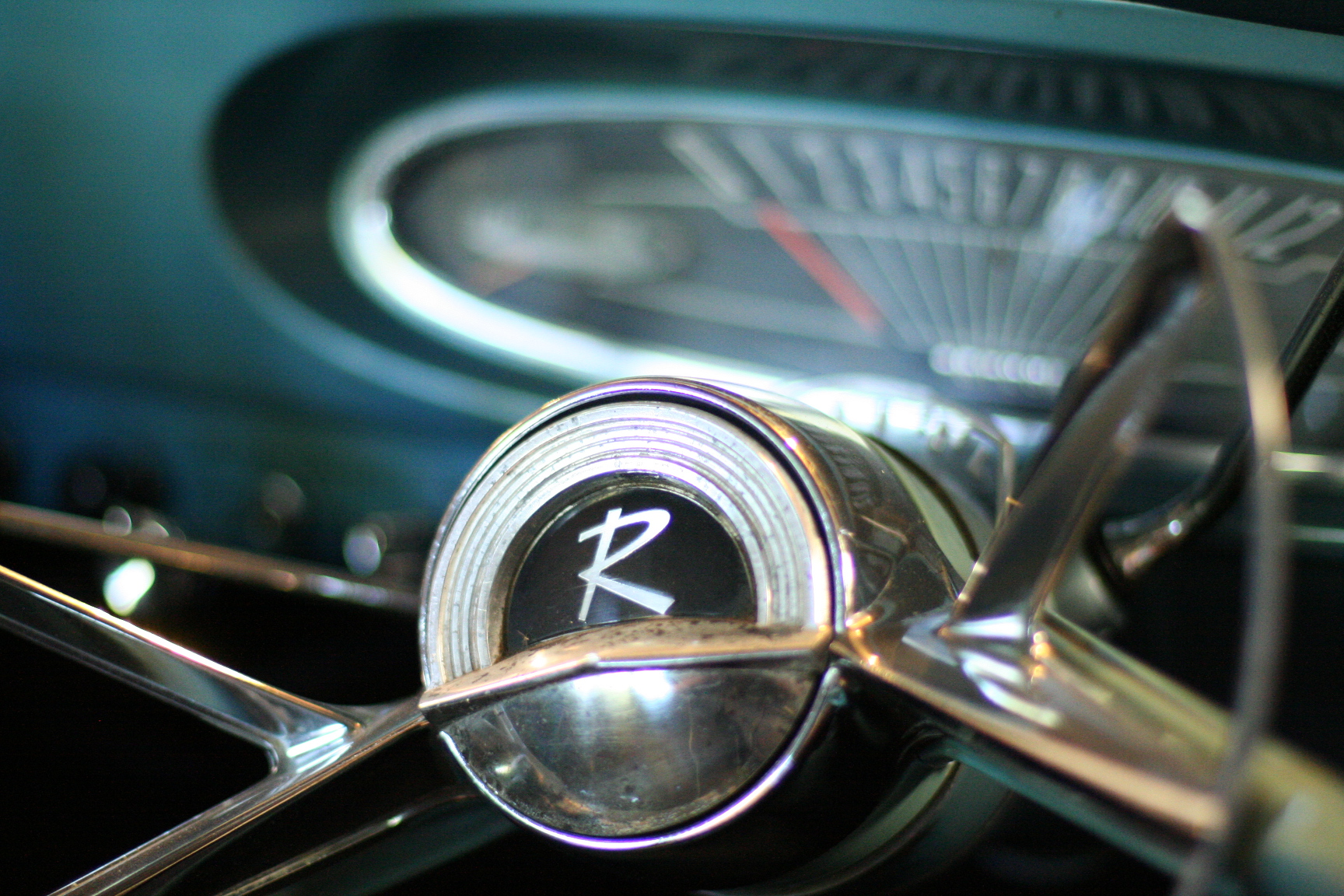
There is one drawback. Because it is a prime lens, which means it has a fixed focal length of 50mm, it does not zoom. I don’t really know what “focal length” is in the technical way, but 50mm is a good number for me as an all-purpose lens. Because the lens doesn’t zoom, it means camera placement relative to the subject of the photo is critical. If the subject doesn’t fit in the frame, it means I have to take the photo from further away. But the positive in that trade-off is that the prime lens does not have the optical compromise that a zoom lens does, and the photos I take with it are much clearer.
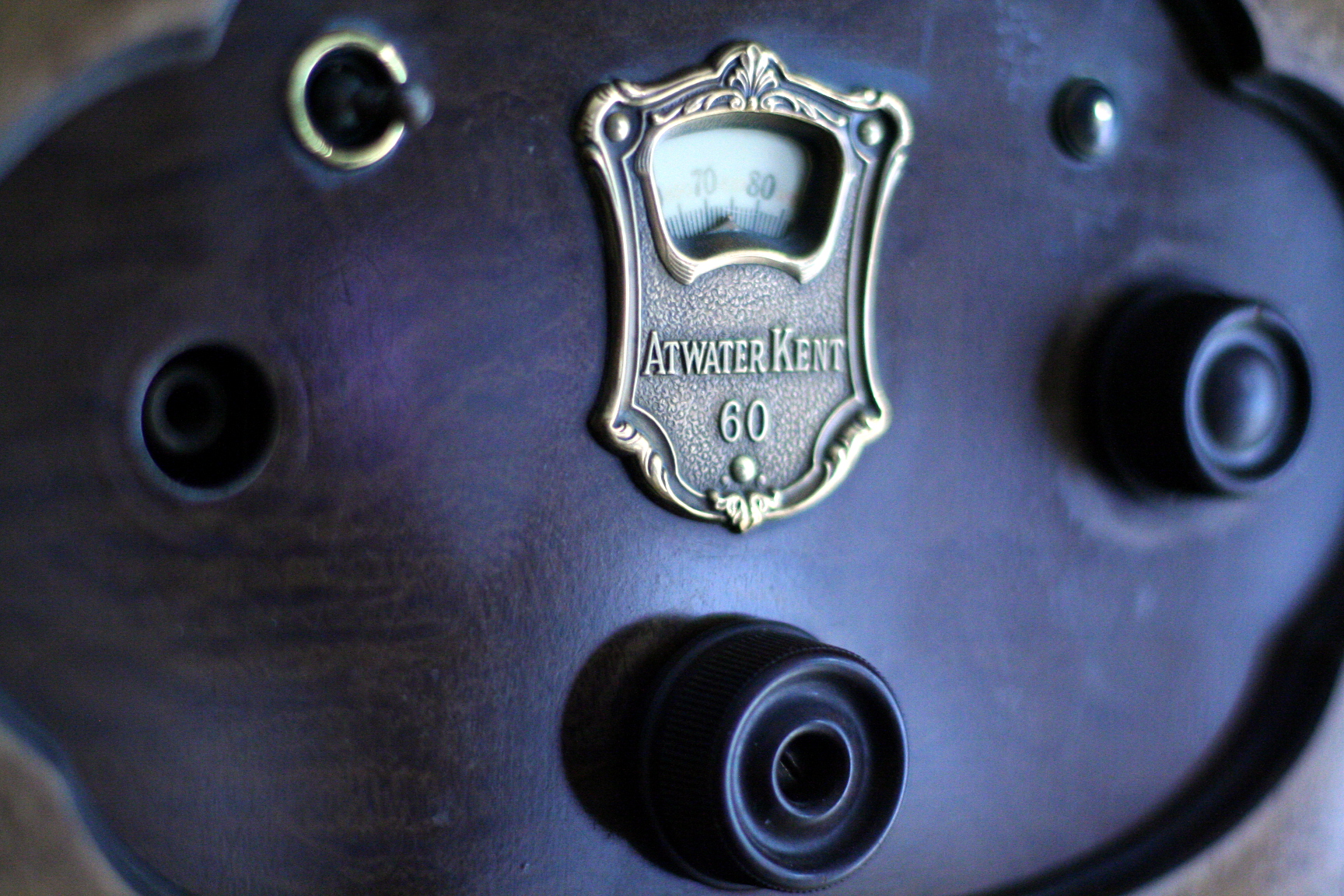
Combined with my B+W circular polarizer and UV filter, that is the best of my photography equipment. There are certainly better camera bodies out there, and I could use a change up, and the Canon 50mm prime is also available with an even wider aperture of f/1.2, but that runs $1500 (Yes Jef, I know you have one!) Better glass is expensive! Let’s face it – at $350, the 1.4 is plenty good enough. I figure that I should take better pictures by being a better photographer and not by upgrading equipment – I won’t be needing a bigger camera bag anytime soon.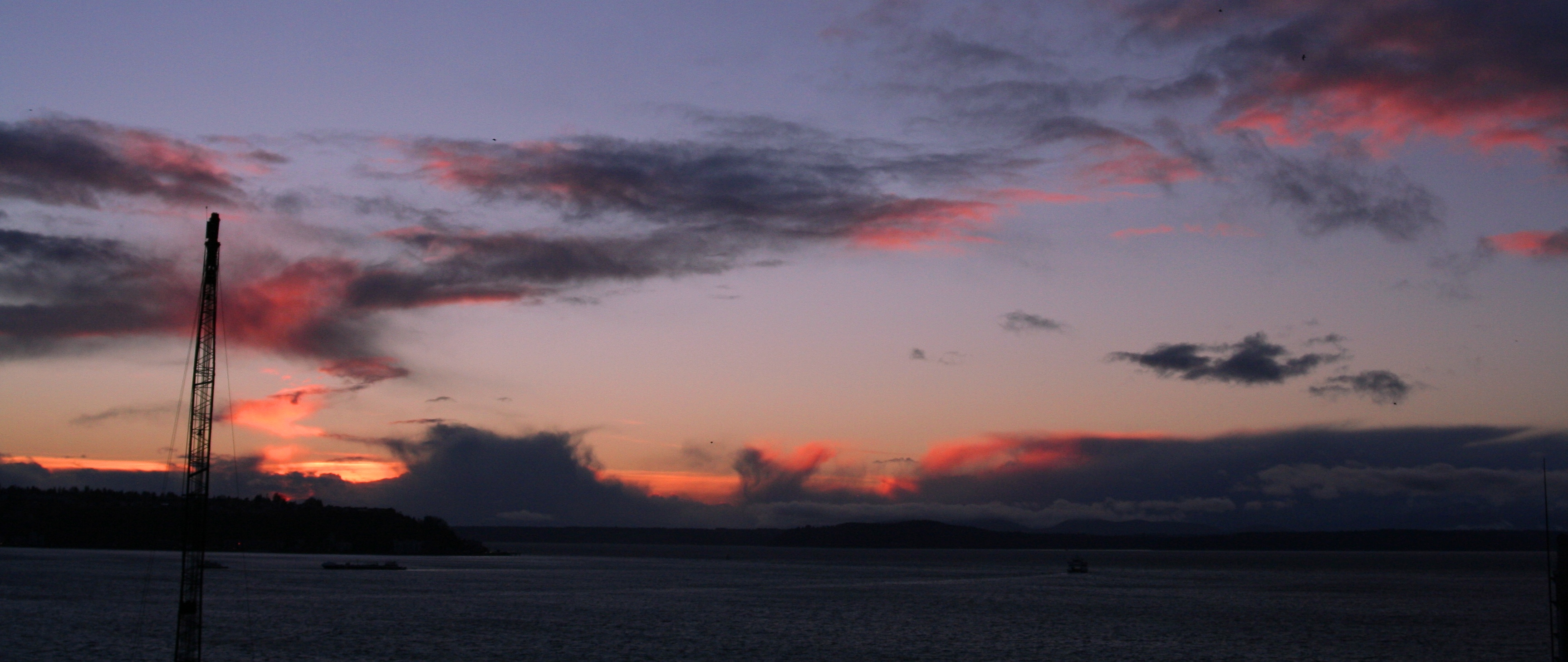
All this is to say that, despite being able to take a decent shot or two, the naked eye seems much better to me. No matter what I do, I am not able to capture the spectrum of a beautiful sunset – the kind that comes in from over the coastal range, cutting in below the clouds, lighting them flamingo pink . . . No matter what I do, the blue of the sky isn’t as blue as what I actually see, and the pink isn’t as vibrant as that moment before dusk.

An old photo I took on film at the International Rose Test Garden in Portland Oregon. This color saturation is something I have yet to acheive on digital. It is an unedited flatbed scan from the negative. I don’t have the print, so maybe the color is a result of the scanner.
Maybe it’s just that I’m too lazy to work with the raw data and instead I just use the compressed jpeg, and maybe I don’t know all the features of my camera as well as I should – I’m pretty much an Aperture Value & Auto Focus kind of guy. But there are so many times when I take a shot and and expect something good, only to be disappointed.
I think this really goes to just how amazing the creation of the human eye is. In a photograph, the pixels, or data points, are evenly distributed. But God made our eyes with a concentration of light sensors just for the thing that the eye is focusing on, and still gave us enough sensors around the rest of the eye that we can know what to focus on for detail. It isn’t an accident – the level of complexity in the human eye is simply amazing. All the parts work together with a specific purpose, none of which is dispensible. If any of the parts have a problem, it affects the entire outcome.
My Canon 50mm prime can focus on an object as close as 18 inches away, but my eyes can focus on something much closer. This is critical for detail work such as rebuilding a clock movmement.
And the human eye is so adaptable! In the dark of night, I can make out just enough to get around my apartment without the lights on. My camera would only take a completely black frame under those conditions, unless I used the manual mode to set up a time exposure, and in the dark that would be a difficult task. My human eye does all of this automatically. Everything is automatic with every movement of the eye – automatic focus, automatic aperture, automatic white balance, and all of it very quickly. To focus my camera on ten different subjects in sequence is time consuming, but my eyes do it in mere seconds.
The human retina has at least 75 million light sensors in the eye. Of course they are not evenly distributed, but how can my mere 8MP camera compare? Standing on the shipping dock of the warehouse at work, I can look down to the pavement ten feet below my eyes, and see the individual grains of white grit washed off of the roof lying on the black asphalt. At best, these would each be a single white pixel as represented by my camera.
I know, I know . . . even though I am comparing primes, I can’t really compare the two because the human eye does not take stills. It more or less collects data continuously, and the brain renders it. Indeed, this seems much better than a single snapshot.
It is true that this amazing creation, as perfect as it should be, is not. It has been corrupted along with the rest of creation, and so fails, usually over time. Now that I am well on the backside of thirty, my once acute vision is quite noticably compromised. At first the prescripiton was planar, meaning flat glass, with minor corrections for blur and distortion. But two years ago, one eye became a +.25, whatever that means. All I know is that the correction is no longer a flat lens, and the corrective numbers will probably get bigger every time I go to see the eye-guy.
Even so, I still prefer my God-given twin lenses over my cheap Canon glass.
For my cousin’s wife who shares the name:
The Johann Georg was one of five ships that carried members of the Saxon Emigration Society to America in 1838/1839. C. F. W. Walther, first president of the Missouri Synod, sailed on the Johann Georg . . .
The Saxon immigrants numbered nearly 700 people. One ship was certainly not large enough. The immigrants traveled on five ships—the Copernicus, Johann Georg, Republik, Olbers and Amalia. The first two left Bremerhaven on November 3, 1838, the Republik on November 12, and the last two on November 18. The immigrants faced hardships on the journey, including extensive storms and some deaths. They also experienced many new things on board, such as watching porpoises swimming alongside the ships and warm temperatures in December as they neared the Gulf of Mexico.
The first ship to arrive in America was the Copernicus, reaching New Orleans on December 31. Three more ships would arrive in the following weeks. One ship, however, never reached the United States. The Amalia was lost at sea, carrying seventy passengers. Rev. Otto Hermann Walther, older brother of C. F. W., wrote a stirring poem in response to the loss. Written as a dialogue with our Lord Jesus Christ, the poem gives both comfort and the Gospel message to the author and his fellow immigrants.
Here are the first two stanzas in English:
Lord Jesus, Lord Jesus, the ship has not come,
The ship named Amalia is missing!
When wilt Thou, O pilot, convey her back home
From the storms that are howling and hissing?
Have we, Lord, been favored Thy mercies to share?
Was their ship too small for Thy kindness and care?
Lord Jesus, come, still all our yearning
And hasten Amaliaʼs returning!
I granted her prayer
For kindness and care.
She was not too small
For tempest and squall.
My love went with her a-sailing,
My power and presence prevailing.
My sheep, neither hopeless nor craven,
Were led to a beautiful heaven.*
*Translated by W. M. Czamanske. Reprinted from August R. Suelflow, Servant of the Word: The Life and Ministry of C. F. W. Walther (Saint Louis: Concordia Publishing House, 2000): 46, as quoted from the Concordia Junior Messenger 17 (March 1939).
Text: Concordia Historical Institute, April 1, 2013
Photos: Concordia Historical Institute Museum exhibits, Saint Louis, Missouri, June 5, 2012
Tonight I went on a bike ride for the first time in ten weeks. Only on level ground, only for half an hour, and only for a short distance that I do not know because GPS conked out on me. In my short ride, I was stopped by the police, but not for speeding – they wanted to know if I had seen a missing boy they were searching for. I also rode past an elementary school that burned down yesterday. I saw the cloud of smoke on my way to church, but did not know what it was until I rode past tonight. The smell was something like the burn pile back home, only more sickening. I last smelled this particular smell when Dad took me to see the home of some friends from church after it had burned when I was a youngster. That time I was in my barn boots, and was shown a plastic clock that was still recognizeable, but was droopy and mishapen, something like in the famous Salvador Dali painting. Tonight there were news trucks from all the big local stations, and their lights were on. I was able to see that pretty much the whole building had burned down to the ground.
I haven’t ridden since the week before Thanksgiving. After ten days away with family at the end of November, I came home with a horrible nasty cold, and my ability to breathe was no good for cycling, or much of anything else for that matter. Once over that problem, there were a series of Dr. appointments to diagnose a knee problem, and the bike didn’t work out schedule-wise. That got me to Christmas, when I spent a little more than a week at Mom & Dad’s. On January 15, my knee was operated on for a torn medial meniscus. This is a part of the knee that had been repaired before, but the repair did not hold. The solution this time was simply to cut the torn portion away as is usually done, and clean that area up.
Knees are funny things. It doesn’t take much of a problem to cause swelling, and in my experience, once the kneecap is out of place, it hurts. There must have been advancements in surgery techniques, because instead of three incisions, there were only two this time. Before being discharged from surgery, they gave me a hydrocodone pill for pain, and a prescription for the same which was filled, but which I never took. The swelling was also much less, so much less that my knees looked almost symmetrical after only five days.
I had stayed with some good friends the night after surgery, since I wasn’t supposed to be alone for 24 hours after general anesthesia, and was lovingly scolded for bringing my overnight bag down the stairs the next morning. I was scheduled for six physical therapy sessions over three weeks, but was discharged after only three. At the first session, the day after surgery, the therapist said the crutch I was using was really only a prop, and I wasn’t required to use it. The therapist laughed at that third session when I leapt out of the chair in the waiting area, only a week after surgery. That day the joint was only six degrees away from full range of motion.
The overwhelming success of the surgery may be directly attributed to the skill of the surgeon (if anyone in the area needs a good one, let me know), the care of the nurses, the cleanliness of the facilities, and all the benefits that good medical practice can provide. But as Grandpa says, many prayers were answered. The truth is that all of this is a gift from the Father, providing for his child.
So perhaps after a couple weeks on level ground, I’ll be taking the ol’ bike over the bridge to work again.
These days I work a little more than normal. I have my real job, repairing various commercial electronics for Mood Media. Most days I choose one type of electronics, say a certain digital satellite music receiver, and work on that model from the beginning of the day to the end. On these days, there is little excitement from one unit to the next. Few and far between are the times I get to say, “I’ve never seen that before.” Today, however, was varied. I repaired three satellite receivers, two oscilloscopes, one spectrum analyzer, a power amplifier, and a large venue projector. I enjoy a new challenge. Working on something I never have before is exciting, like hunting in a new terrain, trying to ferret out the faulty component. This is what I do for 45 to 50 hours every week.
In my evenings and weekends I work on a (very) small side business where I design and build electronics. These are small items, most of which will end up in antique cars. All are handcrafted, so every hole is drilled one at a time with a pull on the drill press, every component is placed one at a time by hand, and every circuit is hand-soldered one point at a time. As any craftsman knows, an error can be disastrous, and some cannot be undone. This is a lesson I have learned the hard way, and so every detail is seen to with patience. This is what I do for about 20 – 25 hours a week. I suppose that overall, I work harder than some, and not as hard as others.
But today I am tired. I compare this tiredness to another . . .
Am I more tired than when I baled hay and straw with my family for eight summers?
Am I more tired than on the thirtieth consecutive fourteen-hour day without the respite a rain would provide?
Am I more tired than pumping diesel fuel into seven empty tanks at the end of the day with a hand crank pump, arms aching no matter how many times I switch hands?
More tired than living in a camp trailer for six weeks because home is too far away to drive every day?
More tired than an uneaten pizza, the crew’s reward for turning out 5000 bales yesterday, left because it is too hot to feel like eating?
More tired than reaching the seasonal goal of 120,000 bales, enough to meet the needs of the books, and then pushing further because this is where they go into the black?
Am I more tired than when I rode on the back of a baler for half a day trying to get a knotter to work right, the honeymoon after winter maintenance and repair long over?
More tired than when I busted my knuckles on that knotter when the 17mm wrench slipped off the nut that fastens the worm gear to it’s shaft?
Am I more tired than hauling a 40-pound pail of open-gear lubricant to the top of each machine three times a day in order to pour from it onto a half-ton of moving gears under my feet?
Am I more tired than taking advantage of a moment when all the machines are working right, everything is fueled and lubed, twineboxes are stocked and no one is complaining, a moment to lie down in a windrow and close my eyes, never at ease lest a machine should swallow me up?
More tired than searching a 40-acre field by spotlight for a cell phone I had dropped?
More tired than the dog, panting in the stagnant heat of the pickup truck, motor off and A/C not running because gas has gone up to $1.19?
Am I more tired than my sister, shotgun in the same stuffy pickup truck, broken leg in a fiberglass cast, and if casts aren’t bad enough in their seventh week, this one was sweated in eight hours a day?
More than trudging in five-pound steel-toe work boots from one end to the other of a 400-acre field to pull all the twine from a row of bales because the baler operator didn’t notice that the center twine was always popping?
More tired than climbing inside the 16″ x 22″ chamber of each baler to change the plunger knives, lying on my side in the confined space with just enough room to manuever the breaker bar?
Am I more tired than when I had to pound a broken shear bolt out of the flywheel . . . again. . . because the operator kept overfeeding, and then the hole became out of round and no shear bolt could be expected to last too long, even under normal circumstances?
Am I more tired than after blowing all the straw out of three balers with compressed air in order to go to another farmer’s fields, appearing like a ghost from the cloud of dust and chaff?
How about when the Chevy had it’s Third Annual Spontaneous Water Pump & Fan Clutch Failure Extravaganza, and it had to be attended to first because it carried the parts and tools to repair the other two machines that were broken down?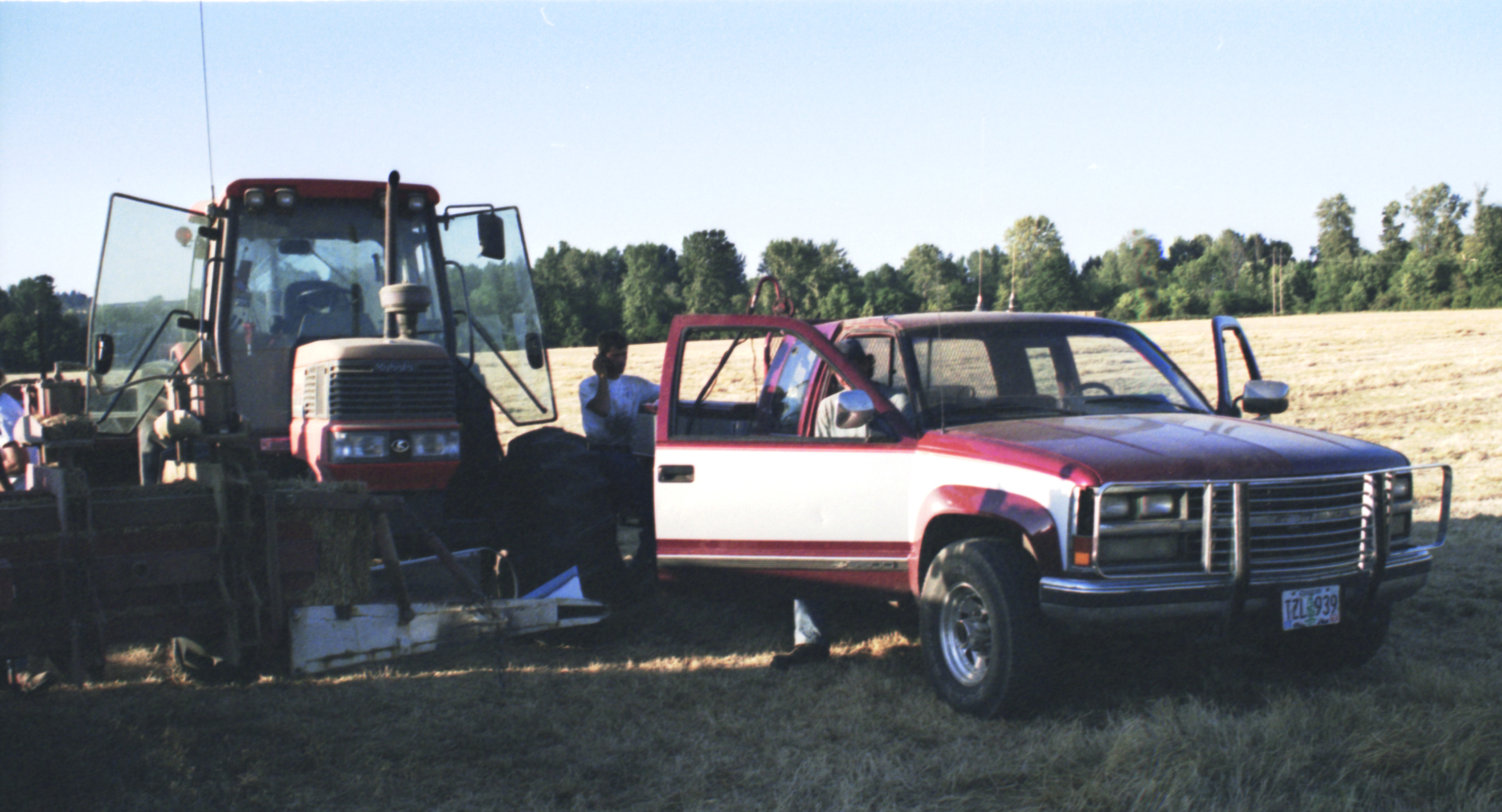
Am I more tired than at 11:30 at night, trying to figure out how to only spend 50 cents in the campground shower and have enough water to get all the gear lube and Bigfoot grease off my body and out of my hair?
Or am I more tired than eating a chicken chimichanga at midnight for the thirty-fifth time because Muchas Gracias is the only place open after 10:00 in this small town?
And am I more tired than one of those really hard days, the ones when there wasn’t a moment that something wasn’t broken, and at the end of the day, it’s two beers with my chimichanga instead of just one, because, lets face it . . . when you’re drinking Icehouse, it takes two anyways?
Despite how it sounds, these were great times. I’ve never worked with another crew as good as this one, and I don’t expect I ever will . . . more on that another time.
When I consider these things, I find I’m not so tired, and I can go another round or two, repair a couple more receivers, drill a few hundred more holes, and solder another dozen boards. I know I can’t keep this pace up indefinitely, and it isn’t suitable in the long run. But in this time and place, these are tasks I have been given to do, and they meet my needs. So I push ahead, thankful for this daily bread, and thankful for having the task to do.
Hey everybody! It’s still Christmas! All the way through January 5!
And since I think that marching bands are exciting, especially the very good ones and the sort that take to the gridiron, here is an exceptional show for the Christmas Season.
This is The Cadets at the 2012 Drum Corps International World Championships, with their show, 12.25.
Update 12/30/2012: It seems that sometime in the last 24 hours, the professionally produced video I linked to became locked. I don’t blame them, they probably want people to buy the DVD. So for free, here is the second best video, which is of a rehearsal of the show. Still cool . . .
httpvh://www.youtube.com/watch?v=QdanjOgVNo8
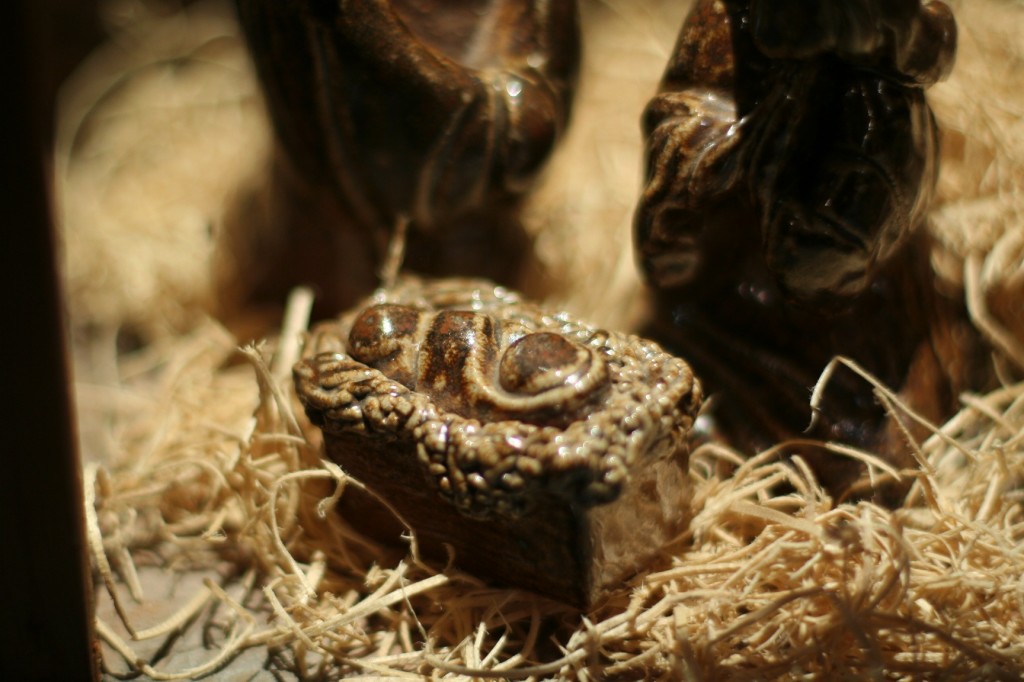 It has been here for years, ever since Mom made it. Like any other of her other work, it was painstakingly shaped by her skilled hands, with great attention paid to detail. But most of that was lost on me. It was a scene like any other out there. Baby Jesus, Mary, Joseph, barn. Why was it special? Because Mom made it, and Mom is awesome.
It has been here for years, ever since Mom made it. Like any other of her other work, it was painstakingly shaped by her skilled hands, with great attention paid to detail. But most of that was lost on me. It was a scene like any other out there. Baby Jesus, Mary, Joseph, barn. Why was it special? Because Mom made it, and Mom is awesome.
I’m at Mom and Dad’s for a few days, and having the luxury of actually stopping, I did, to look at things with new eyes. The walls are made of clay. Mary and Joseph are made of clay. And Christ is made of clay. Here I think for a while. He condescended to be made man, made of dirt. His flesh like ours, tempted like ours, sacrificed for ours. There is something about the very medium that is significant in the representation.
In most scenes like this, everyone seems to be milling about. But here, there is nothing that is not deliberate. I love that, although Mary has no facial features, she is clearly pondering. And Joseph . . . is he looking upward in wonder . . . praise . . . thanks?
I love that the shepherds have not arrived yet – this is very early on that night. There are certainly no wise men and no camels.
“Mom, are these the angelic host?”
“Yes they are, but they are us too . . . in the future.”
Wood timbers. Here they are pieces of cedar holding an invisible roof. The Lamb, already under a cross.